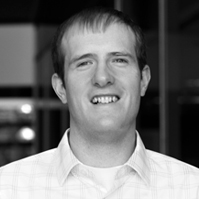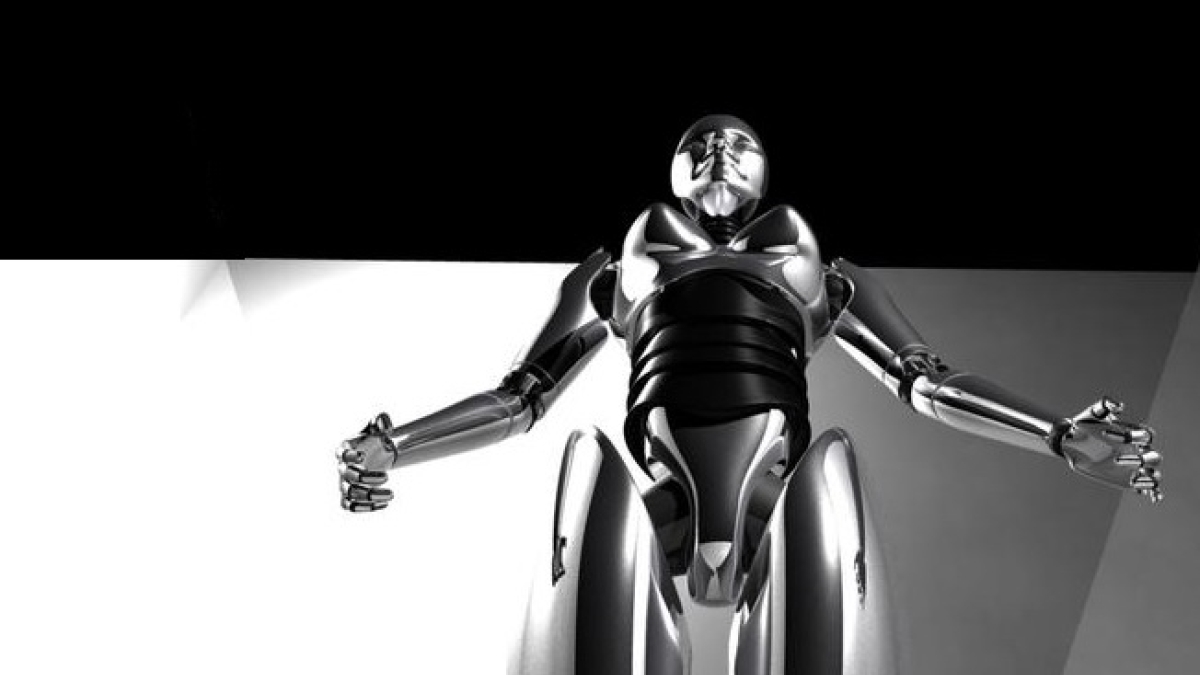Not everybody is a fan of sci-fi. For some, the mere mention of the genre is enough to make their eyes glaze over at the thought of talk about the mechanics of intergalactic space travel or the feasibility of lightsabers.
But you don’t have to speak Klingon to appreciate a story of intense joy, grief or hope. And that's what Center for Science and the Imagination director Ed Finn and his colleague Joey Eschrich want more people to consider.
“Science-fiction stories can be really human stories that are character-driven and full of emotion,” said Eschrich, editor and program manager for the ASU center.
With that in mind, the pair conceived of a means by which they might engage a larger audience in thinking and talking about what might lie ahead. They’re calling it Future Tense Fiction.
Future Tense already existed as a partnership between Arizona State University, Slate magazine and the New America Foundation, manifesting as a series of events as well as a channel on Slate’s website. Its goal is to explore how emerging technologies will change the way we live. Future Tense Fiction is taking that one step further, “giving people new avenues to think about technologies that are going to affect science and policy going forward through science-fiction stories,” Future Tense editor Torie Bosch said.
For this newest venture, Bosch, Eschrich and Finn are working together to commission new stories from high profile sci-fi writers and pairing them with response essays written by experts in the field. They'll be published roughly once every quarter.
The first, “Mika Model” by Paolo Bacigalupi, about robotics, was published in April of 2016. It was paired with a response essay by robotics law expert Ryan Calo, titled “When a Robot Kills, Is It Murder or Product Liability?”
ASU Now recently sat down with Finn to find out more:

Ed Finn, director of ASU
Q: How did the idea for Future Tense Fiction come about?
Answer: The Center for Science and the Imagination works regularly with science-fiction writers, and we often pair up science-fiction writers with researchers to explore big, interesting, ambitious, possible ideas — things that are technically feasible but still kind of moon shots. We wanted to do something that was a little bit more playful, a little bit more open-ended. … So for Future Tense Fiction, we came up with this idea as a way to reach a broader audience, and we wanted to attract high-profile writers and invite them in a more open-ended way to take on some kind of topic that was interesting to them that fit into the broad rubric of Future Tense. So we were excited about that as a way to extend our vision for thinking about the future to new audiences.
Q: Why are you pairing the stories with essay responses?
A: Torie Bosch, who is the editor of Future Tense at Slate, suggested that we find somebody to write an essay responding to Paolo Bacigalupi’s story. And I suggested this guy, Ryan Calo, kind of off-the-cuff, and I think he just did a really awesome job. I was really delighted with [his piece] … and really pleased with how he approached it. His response was exactly the kind of thing we’ve been trying to do at the center. His response to Paolo’s story was sort of like, “You know, this story crystallized some things that I sort of knew and thought about in my field but made them more pointed and really clear in a way that I find helpful.” And I really liked that. Part of our mission statement, or our hope, is that science-fiction can be really helpful as a tool to do that. And stories more generally can be useful as a tool to do that. And one of the things that can be useful for a researcher is to work with a writer and have a story shed some new light on their work, because it brings ideas into a new juxtaposition.
Q: What does storytelling bring to science?
A: I am a firm believer that we understand the world through stories. Stories are a way to deal with complexity and to deal with the unknown, and to organize knowledge in a way that makes sense for humans. It’s one thing to come up with a new technology that has certain technical characteristics that we know operates in a lab. It’s another thing to tell a story about what room in the house you’re going to put this in, and where the buttons go, and how it makes everybody feel. [Science-fiction] stories are about the interface of science and society; it is the genre that explores that interface most closely, and most importantly, does that not just in the context of the present but also the future. Science-fiction stories are really helpful in thinking through the potential consequences, the ethical implications of research, etc. But they’re also really valuable in helping us understand the world that we want to live in. They’re a way to synthesize. So a good science-fiction writer doesn’t just take one idea and turn it into a story. A good science-fiction writer takes many ideas and brings them together into something that feels like a holistic universe, and feels like a compelling environment, a realistic environment. Because in reality, you’re never only dealing with one thing at a time. You can never isolate a problem. The problem is always connected to other problems. And there are always humans involved, making things complicated and messy, and often making irrational choices. So that’s what stories have to bring to science. They help us think through the future in a richer and more nuanced way.
Q: What kinds of topics will Future Tense Fiction stories explore?
A: In general, the range is really wide open. We want to include a really diverse set of issues as we move forward. One of the topics that we’re thinking about for this fall is law and order. Thinking about the intersection of science, technology and society in terms of criminal justice and ethical policing and all of these different issues that we’re seeing playing out in the news right now.
Q: Do you have any personal favorite sci-fi stories?
A: Oh gosh, lots. The conversation that started the center was between Michael Crow and the author Neal Stephenson. And I’m a huge Neal Stephenson fan, I grew up reading his work. One of the best parts of my job is getting to work with him occasionally. Recently, I just finished reading “The Three-Body Problem,” which is a really interesting Chinese science-fiction novel that was translated into English and won several major awards when it was translated. Liu Cixin is the author, and it’s translated by Ken Liu, who’s a lawyer and a science-fiction writer. I read all sorts of stuff, from the sort of more classic stuff, like Arthur C. Clarke and [Isaac] Asimov, to weirder, more recent stuff, like China Miéville. I’m a huge Margaret Atwood fan. Another highlight for me was having her out here two years ago and interviewing her, which was a really awesome experience. Another favorite is Mary Shelley’s “Frankenstein,” which is another big focus for us this year with the bicentennial coming up. I really liked “The Expanse.” I just finished watching the first season of that. It’s based on some novels by James S. A. Corey; I haven’t read the books yet, but I really enjoyed the TV show.
Q: What do you hope to accomplish with Future Tense Fiction?
A: I’d like people who don’t normally read science-fiction to read one of these short stories … and to have people step into a future that’s surprising and provocative in an interesting way, and to maybe have a conversation about it. Or in the case of people whose work is impacted by the subject of the story, who are working on some part of the future that the story evokes, that they might think about their work differently, or learn something new, or be prompted to ask a different kind of question. I think that at its best, an experiment like this can lead people to think differently about the future, not just in the context of a make-believe story but in the context of reality. To build a better future, you have to be able to imagine it. So I hope that some of these science-fiction stories lead people to imagine things that might make the world a better place, or help us avoid things that we really don’t want to happen.
More Science and technology
Extreme HGTV: Students to learn how to design habitats for living, working in space
Architecture students at Arizona State University already learn how to design spaces for many kinds of environments, and now they can tackle one of the biggest habitat challenges — space architecture…

Human brains teach AI new skills
Artificial intelligence, or AI, is rapidly advancing, but it hasn’t yet outpaced human intelligence. Our brains’ capacity for adaptability and imagination has allowed us to overcome challenges and…

Doctoral students cruise into roles as computer engineering innovators
Raha Moraffah is grateful for her experiences as a doctoral student in the School of Computing and Augmented Intelligence, part of the Ira A. Fulton Schools of Engineering at Arizona State University…
